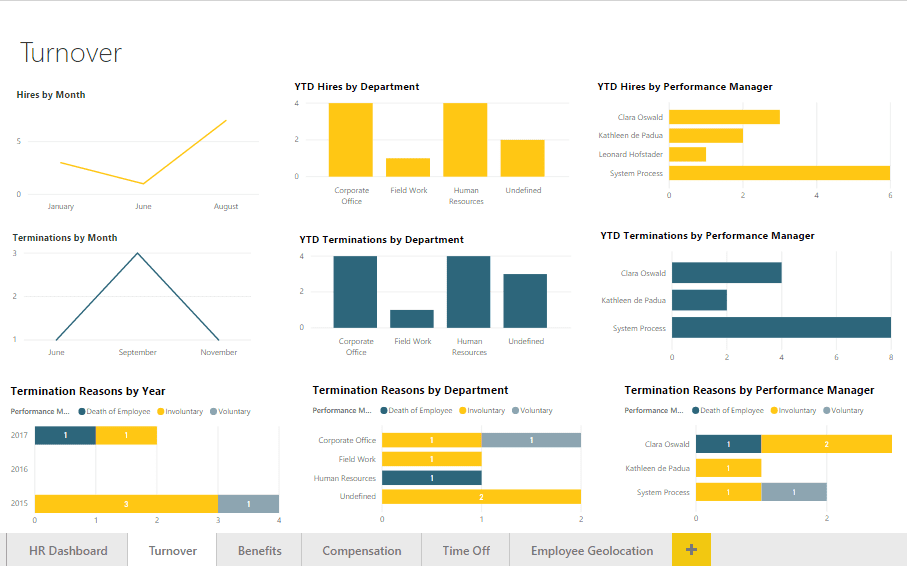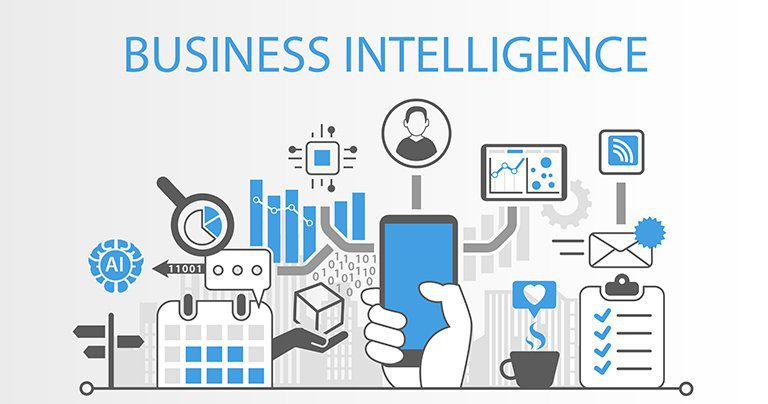The human resources (HR) department is often overlooked by their organizations as a resource to help improve business operations. This is a silly strategy because HR departments typically hold data that can be utilized to help make significant improvements within the company. However, not many know that this information can be quickly attained with business intelligence tools (BI). Let’s change that.
Business Intelligence Tools for HR
The HCM data the HR department holds is compiled and linked over time by information attained from potential, current and past employees. Some datasets that can be assembled by HR to help their organization make more informed business decisions include:
- Compensation
- Hiring trends
- Turnover rates
- Termination
- Time and labor
- Surveys
- Yearly reviews and more
With business intelligence tools, users will be able to take their most important data to create powerful, personalized dashboards and graphs to help illustrate to the organization what improvements can be made to enhance their human capital capabilities. BI tools allow users to:
- Ask the software using natural language to pull specific data needed to analyze
- Avoid hiring and paying 3rd parties to evaluate their data for them
- Connect to nearly any application or data source through API technology
- Make faster business decisions for their organization
- Improve the lives of their most important asset, their employees
Learn more about how HR can utilize BI tools today!
How Business Intelligence Tools like Microsoft Power BI Boost HR

According to HR Future, a BI solution can deliver an ROI of almost 200 percent just by focusing on these three levels of HR operations:
- Eliminating manual processes
- Limiting errors such as spelling and duplicate data entry
- Saving time
With a partnership formed between Arcoro and Microsoft Power BI, Arcoro clients will be able to pull and compile data sets from numerous job responsibilities that are typically reserved for HR or business operations professionals to complete.
The following are just a few examples of how end-users can use the data acquired from Power BI to help improve the decision making regarding their organization’s human capital.
Using BI to improve recruitment, engagement and retainment of potential and current employees
Did you know that the organizational costs of employee turnover are estimated to range between 100-300 percent of the replaced employees’ salary? Or, Did you know that up to 20 percent of employee turnover happens in the first 45 days of employment?
With business intelligence tools like Power BI, you will be able to collect an abundant amount of employee data like reviews from peers, management and clientele; compensation, benefits and more to help you create better strategies to help improve your employee recruitment and engagement initiatives.
With the data compiled, administrators will be able to take the smallest of details to create an employees’ “life” within in the organization. This data can be used to further inspire the employee and boost productivity, to figure out employee costs, identify employees deserving of a promotion, or underperformers who might need a position change or needs extra support.
Using BI to help identify ways to assess the performance of the HR department
With the available HCM data, HR or business operations professionals can quantify the areas where their own department adds value, creates trends and where improvements are needed, determined by industry benchmarks. Business intelligence tools are not often used or known they can be used with an organization’s HR department.
Why?
1. Because some organizations just aren’t up-to-date on the technology that can help improve their business operations through data attainment and utilization. They think HR is only used to recruit and to manage benefits.
After this article, we should all know by now that simply isn’t true!
2. Employers fear that the confidentiality of employee data may be compromised.
While data security being top-of-mind is a great thing to worry about, it’s mostly typical user-error that results in the corruption of data loss or theft. It’s up to the organization to make sure their data is secure by following through with thorough training and implementation best practices for assigned administrators of the software.
Some other areas of data an HR department can create custom reports from include turnover, benefits, compensation, time-off and more!
Brokers who are looking for ways to combine their benefit offerings with an HR automated business intelligence solution such as Microsoft Power BI, as well as other HCM solutions should visit The Brokers’ Guide to HR automation!




